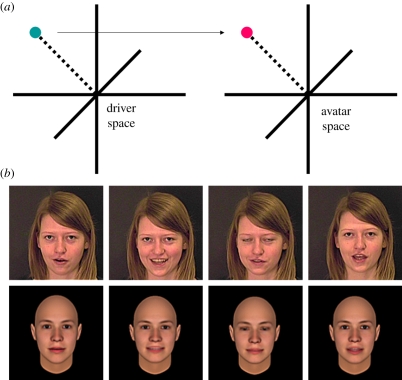Figure 1.
(a) Schematic of the animation process employed in the Cowe Photorealistic Avatar procedure. Principle components analysis (PCA) is used to extract an expression space from the structural variation present within a given sequence of images. This allows a given frame within that sequence to be represented as a mean-relative vector within a multi-dimensional space. If a frame vector from one sequence is projected into the space derived from another sequence, a ‘driver’ expression from one individual may be projected on to the face of another individual. If this is done for an entire sequence of frames, it is possible to animate an avatar with the motion derived from another actor. This technique was used to project the motion extracted from each actor's sequences onto an average androgynous head. (b) Examples of driver frames (top) and the resulting avatar frames (bottom) when the driver vector is projected into the avatar space. Example stimuli and a dynamic representation of the avatar space are available online as part of the electronic supplementary material accompanying this article.

